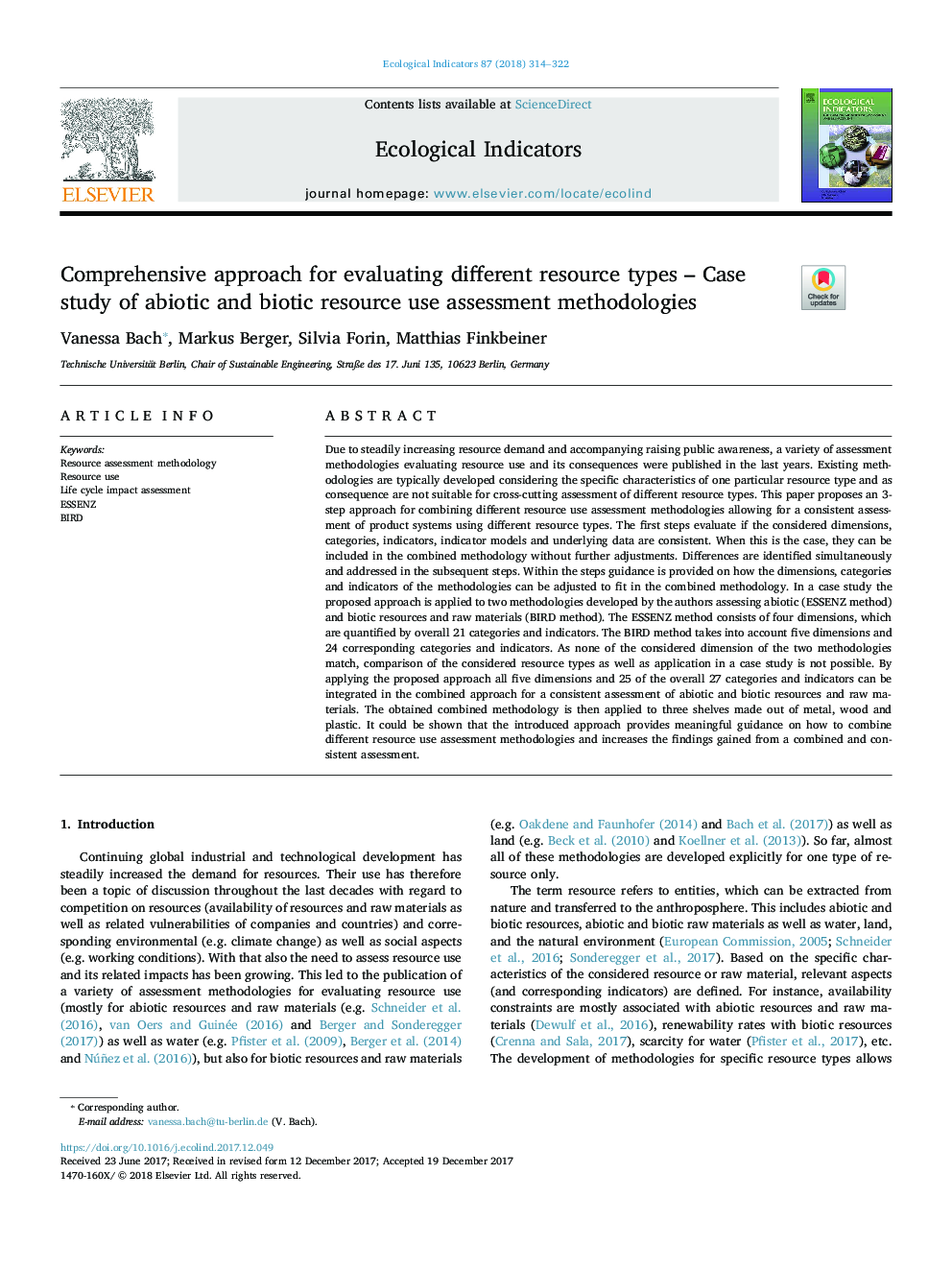| Article ID | Journal | Published Year | Pages | File Type |
|---|---|---|---|---|
| 8845601 | Ecological Indicators | 2018 | 9 Pages |
Abstract
Due to steadily increasing resource demand and accompanying raising public awareness, a variety of assessment methodologies evaluating resource use and its consequences were published in the last years. Existing methodologies are typically developed considering the specific characteristics of one particular resource type and as consequence are not suitable for cross-cutting assessment of different resource types. This paper proposes an 3-step approach for combining different resource use assessment methodologies allowing for a consistent assessment of product systems using different resource types. The first steps evaluate if the considered dimensions, categories, indicators, indicator models and underlying data are consistent. When this is the case, they can be included in the combined methodology without further adjustments. Differences are identified simultaneously and addressed in the subsequent steps. Within the steps guidance is provided on how the dimensions, categories and indicators of the methodologies can be adjusted to fit in the combined methodology. In a case study the proposed approach is applied to two methodologies developed by the authors assessing abiotic (ESSENZ method) and biotic resources and raw materials (BIRD method). The ESSENZ method consists of four dimensions, which are quantified by overall 21 categories and indicators. The BIRD method takes into account five dimensions and 24 corresponding categories and indicators. As none of the considered dimension of the two methodologies match, comparison of the considered resource types as well as application in a case study is not possible. By applying the proposed approach all five dimensions and 25 of the overall 27 categories and indicators can be integrated in the combined approach for a consistent assessment of abiotic and biotic resources and raw materials. The obtained combined methodology is then applied to three shelves made out of metal, wood and plastic. It could be shown that the introduced approach provides meaningful guidance on how to combine different resource use assessment methodologies and increases the findings gained from a combined and consistent assessment.
Related Topics
Life Sciences
Agricultural and Biological Sciences
Ecology, Evolution, Behavior and Systematics
Authors
Vanessa Bach, Markus Berger, Silvia Forin, Matthias Finkbeiner,
